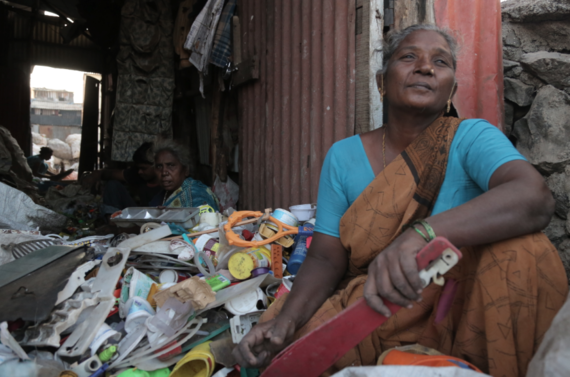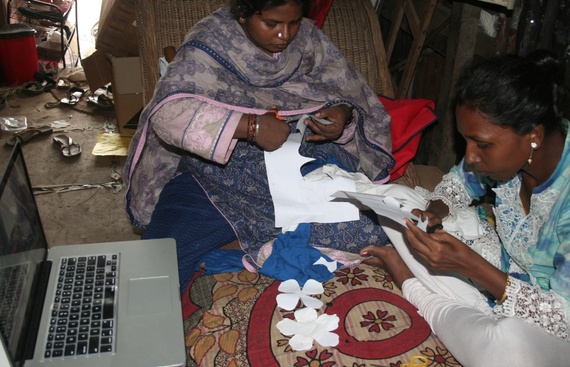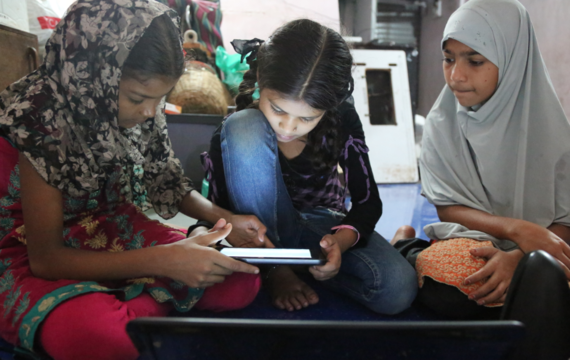As the year grinds to a ear-splitting halt amidst protests, riots, clashes over Ferguson, Eric Garner, campus rape and Uber rape scandals, it helps to look for some pinpoints of light.
I can see only one solution for social justice, tolerance and equality - and it is education. But the challenge is that education is a long-term game and requires either a tremendous self-drive on the part of the learner, or a robust infrastructure of support that lasts for decades. The latter is very hard to achieve - especially at scale.
But you do come across incredible stories of self-driven learners who help redeem faith in the human spirit. A few women and their daughters from Dharavi are just such an example.
Dharavi is Asia's largest slum with over one million people packed into a maze of impenetrable dark alleys and corrugated shacks. People are drawn to the settlement, as Dharavi has come to be seen as a land of recycling opportunity, with new money from this recycling even spawning a slum gentry, and upmarket bars, beauty parlors, and clothing boutiques. But a powerful minority controls the entrepreneurial opportunities in the slum and exploits the cheap labour. Everyday hundreds of Dharavi inhabitants (many of them young children) risk their lives recycling the city's waste, working in the cramped factories sorting through the syringes and smelting the hazardous waste. Katherine Boo describes these lives in her heart wrenching book Behind the Beautiful Forevers.
Despite increased average income, workers remain caught in a cycle of poverty. Although not for lack of innovation--having limited resources ignites a creativity lost to many living in abundance. Innovation is a survival skill in slums, as people create products, architecture and services from nothing.
One such set of lives collided with our world in early 2013 when a group of Dharavi women recognized a market for laptop bags and used the scrap materials around them to produce beautiful, hand-crafted products. But they didn't want to stop there. They wanted to learn how to create a mobile app so that they could launch their business and finally break out of the cycles of poverty. They found an advocate, Nawneet Ranjan (who was creating a documentary about the innovation in Dharavi) and he approached us and asked us for guidance on how he could help them learn programming and entrepreneurship.
That was the start of Technovation Dharavi. The women pushed their daughters to go through the program and 15 girls actually created apps on safety for women, access to clean water and education. This is absolutely incredible considering that they competed with girls from the wealthiest schools in Silicon Valley whose parents work in tech giants such as Google and Microsoft. Many of these girls work as servants in people's homes earning $3/month and do not have access to high quality education. They have trouble with basic literacy. But they had an incredible drive to learn and that is what got them so far.
Seeing their determination, I was intrigued to pinpoint what constituted such an intrinsic motivation to learn. Research shows that 4 factors need to line up for a learner to be self-driven:
- Self-efficacy - you feel capable of being successful at a task/lesson
- Task value - you see the relevance of the task/lesson to your life
- Knowledge - lessons should scaffold concepts so that you have the understanding needed to participate fully (the girls used a visual block-based language, MIT App Inventor, to develop their app. This language allows anyone with no prior programming knowledge to be successful at creating a mobile app).
- Choice - you have choice in activities so that you are invested in them
The sense of self-efficacy is a nuanced one for Indian girls. Although the Indian culture is very oppressive to girls, the pall of poverty is terrifying enough to push girls to overcome cultural attributes through sheer hard work and persistence. And this is broadly applicable to girls from other Asian cultures as well. This is in stark contrast to their US counterparts. See "The Anatomy of Interest: Women in Undergraduate Computer Science" for a very well researched discussion on this issue by Jane Margolis, Allan Fisher and Faye Miller.
The Dharavi girls are very motivated to learn, to steer a different course than their mothers and to make it possible for the little ones to look up and see a different star in their horizon.
We have made such progress as a collective race, that it is a shame we are still battling with issues such as violence against minorities. But there are some things within our control and supporting groups such as these Dharavi girls to harness technology for change is a positive step into the future. These pinpoints of light need to be fueled into a blazing flame of knowledge, equality and justice.




